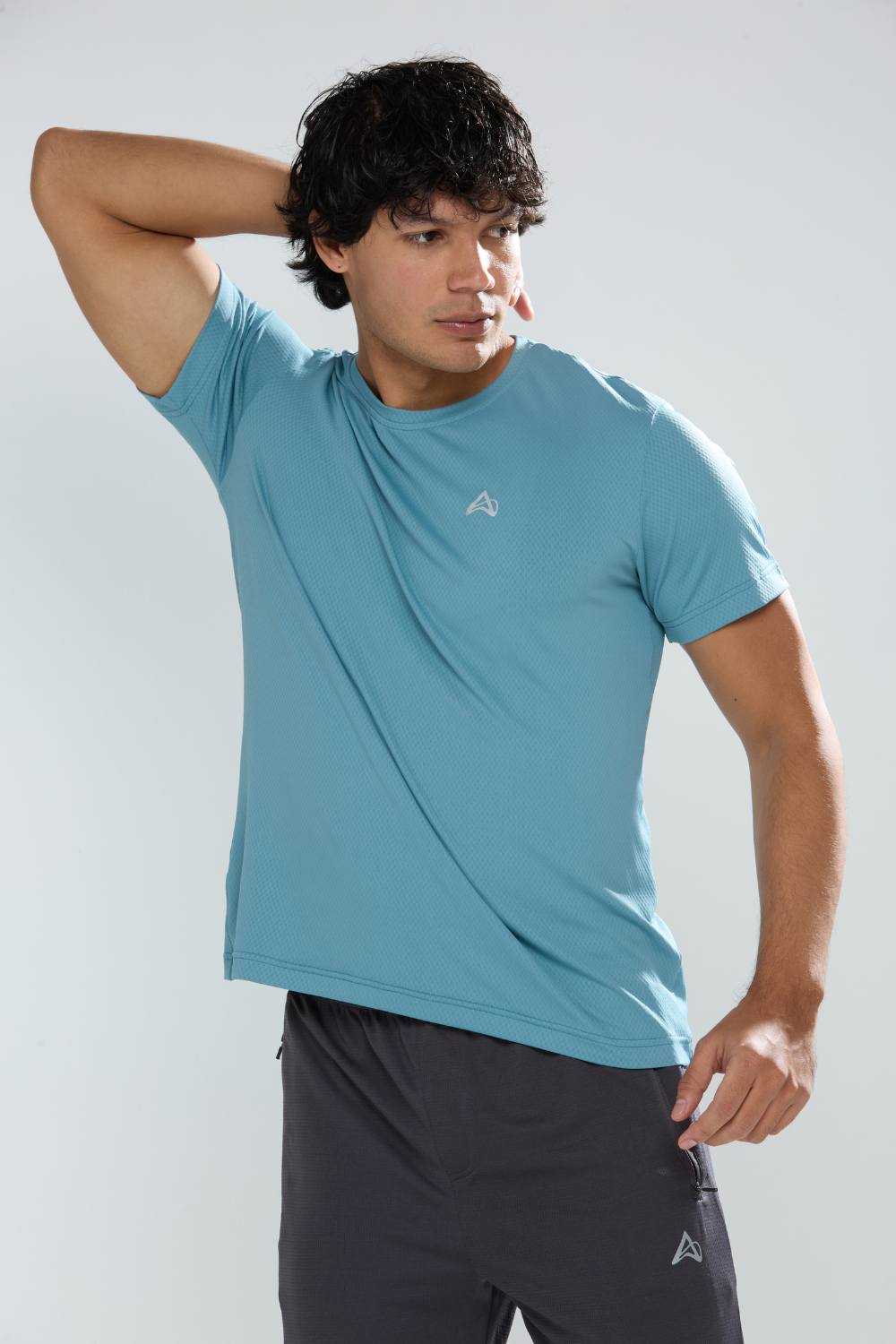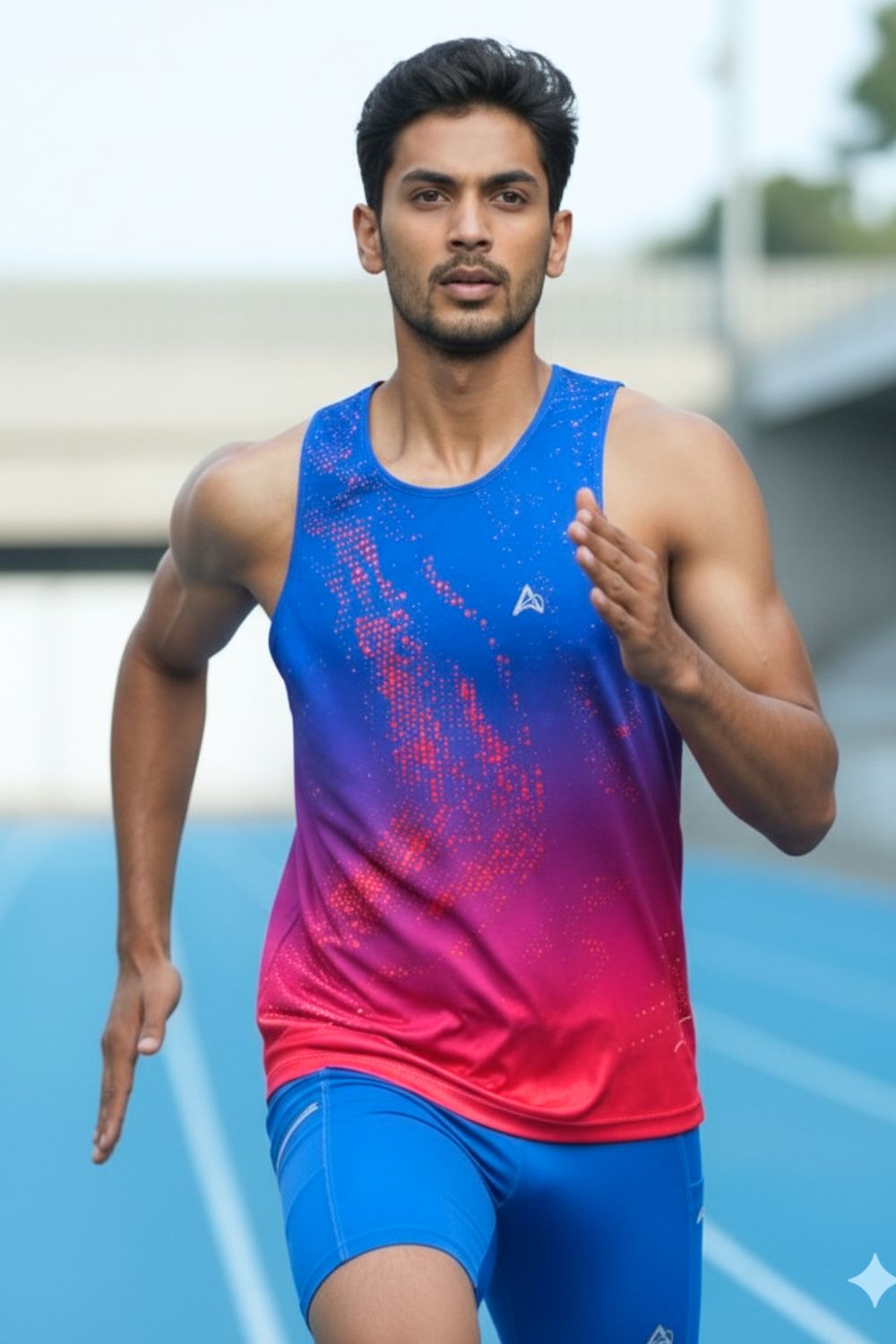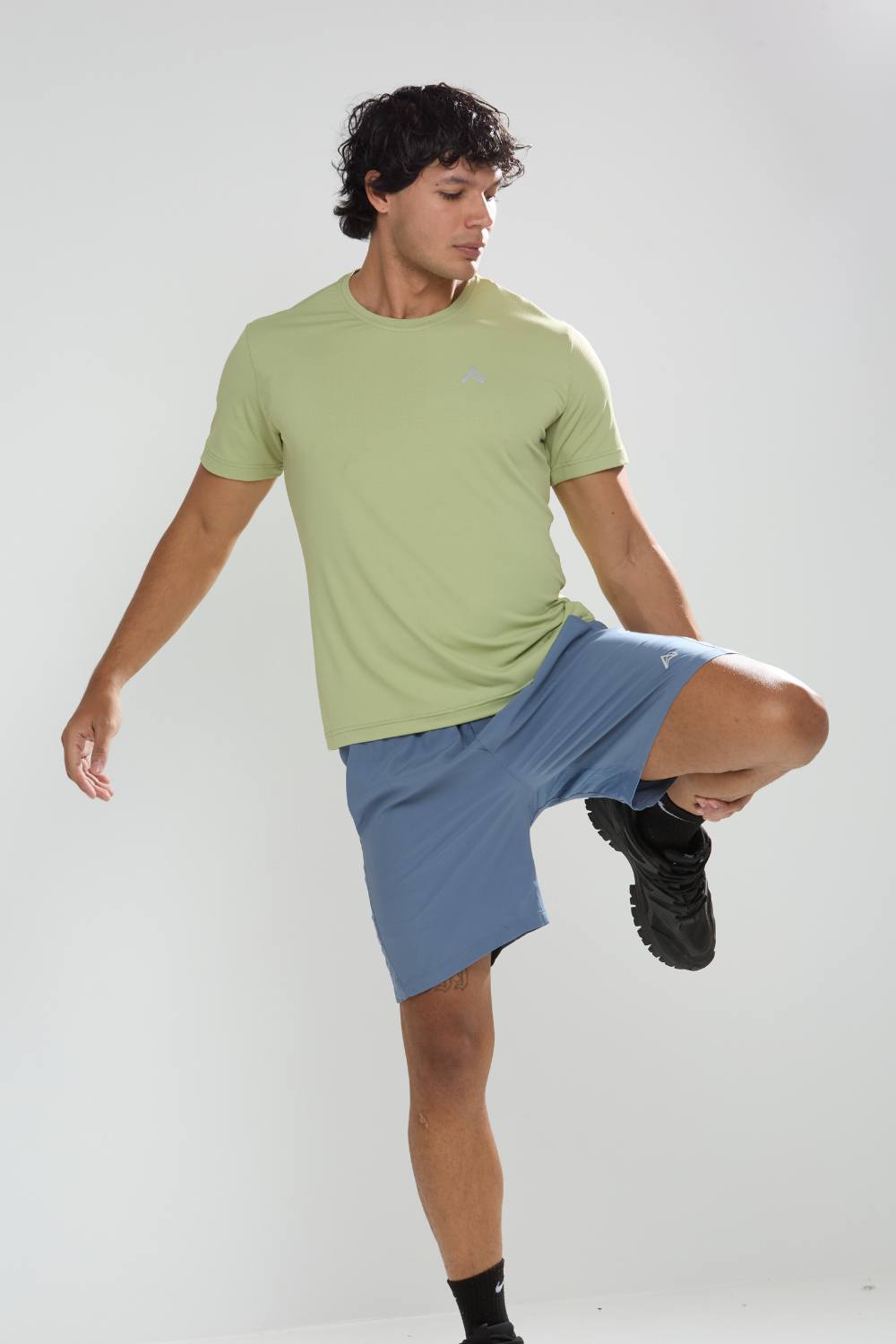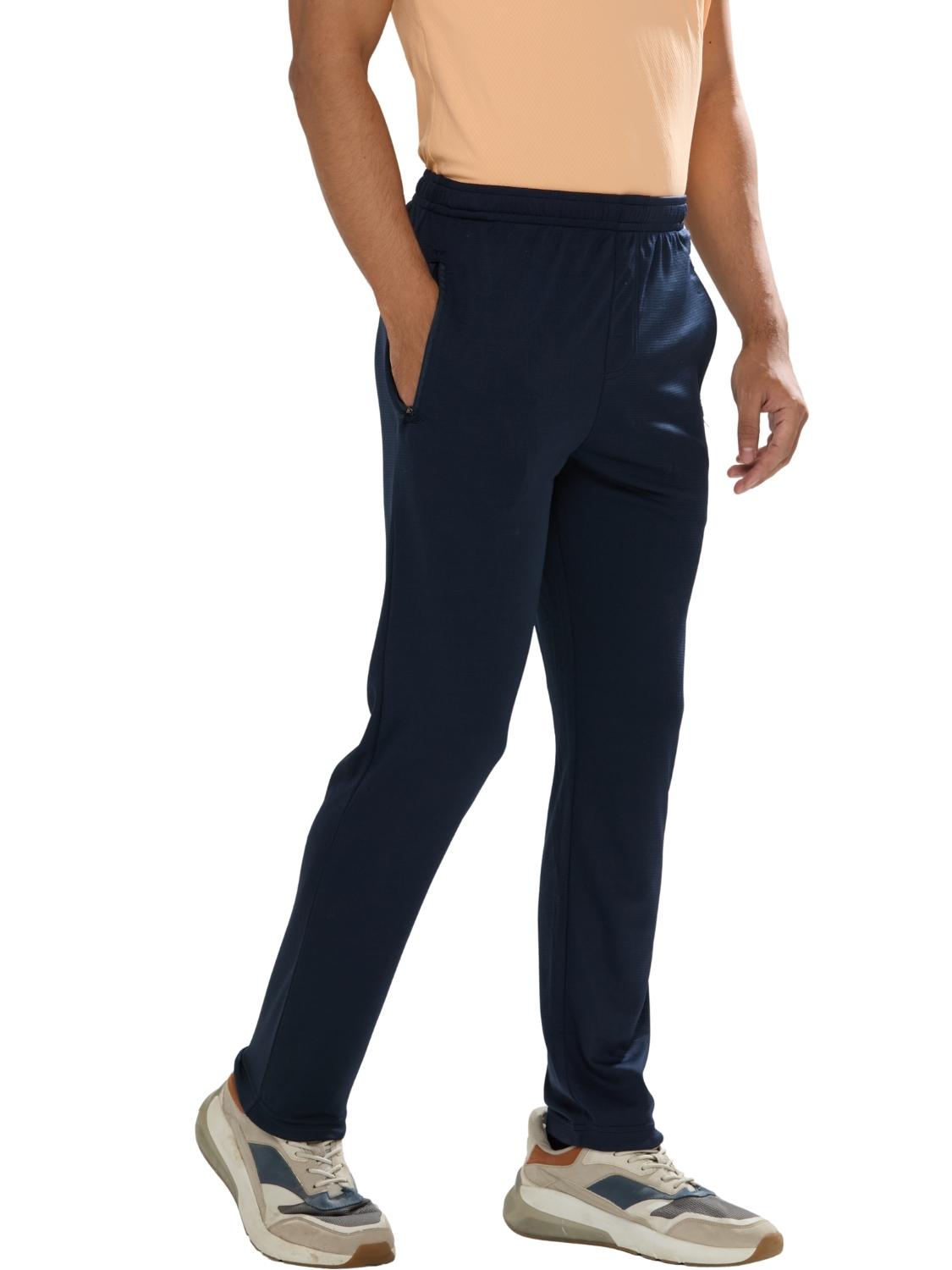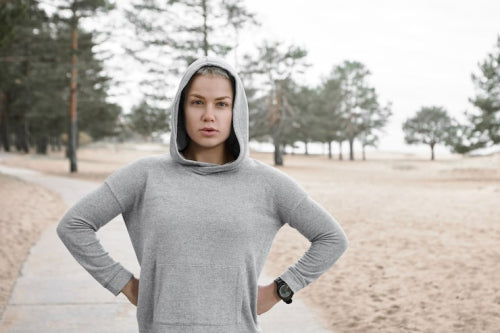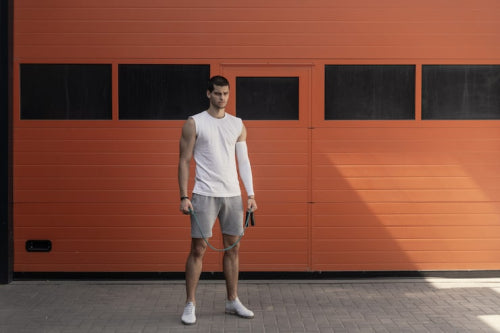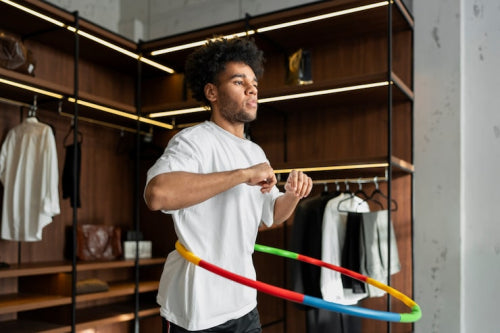Picture this: you're navigating the steamy pavements of Mumbai just as the sun rises, your old cotton tee soaking up every drop of sweat, turning heavy and abrasive with each step. Contrast that with slipping into a streamlined synthetic shirt that swiftly draws moisture away, allowing you to zero in on your pace and breathing. This transformation isn't merely about swapping clothes it's emblematic of a broader upheaval in India's fitness landscape, where advanced fabrics are eclipsing cotton to deliver superior endurance and ease.
Tired of gear that slows you down? Chafing, soggy fabrics, and missing pockets kill your run's momentum. At Aguante, we're runners who get it. Our high-performance activewear features moisture-wicking fabrics, ergonomic designs, and smart storage to keep you focused. Shop Now!
Performance Synthetics Overtake Cotton in India's Running and Fitness Apparel Market
As the activewear sector in India matures, lightweight, sweat-repelling synthetics are steadily supplanting traditional cotton, providing superior functionality and comfort for athletes and casual exercisers alike. In this comprehensive exploration of the evolving market, we delve into how innovative brands like Aguante.in are at the forefront, crafting apparel suited to the rigorous needs of city runners across locales from Bangalore to Delhi.
The Shift from Cotton to Performance Fabrics in India
Cotton's enduring popularity in India stems from its inherent breathability, familiarity, and cultural ties. Yet, as increasing numbers strap on shoes for marathons in Hyderabad or gym routines in Gurugram, cotton's drawbacks come into sharp focus. It soaks up perspiration like a blotter, adds unnecessary weight, and lingers damp amid pervasive humidity. Synthetics step in as the solution: blends of polyester, nylon, and spandex that efficiently manage moisture, offer flexibility, and recover shape effortlessly after repeated use.
This pivot aligns with a surging expansion in India's sports apparel industry. Market insights reveal that the India sports apparel market stood at USD 705.85 million in 2024, poised to escalate to USD 1,592.58 million by 2030, advancing at a compound annual growth rate of 14.52%. Driving forces include heightened awareness of health, amplified involvement in physical pursuits such as yoga in Pune or group runs in Navi Mumbai, and supportive policies like the Fit India Movement, which are converting city residents into dedicated fitness advocates craving high-performing attire.
Central to this evolution is the synthetic fiber segment. The India synthetic fiber market recorded a volume of 4.52 million metric tonnes in 2024, anticipated to expand to 6.21 million metric tonnes by 2030 with a CAGR of 5.64%. Polyester staple fiber leads the pack, celebrated for its affordability, resilience, and efficiency in clothing. Companies are capitalizing on this by merging it with spandex for optimal elasticity consider the global spandex market, valued at USD 3.24 billion in 2025 and forecasted to attain USD 5.11 billion by 2032 at a 6.7% CAGR, with apparel commanding 35.1% of the share.
On a worldwide scale, activewear parallels this upward trajectory. The sector achieved USD 362.17 billion in 2024, projected to hit USD 384.48 billion in 2025 and USD 491.58 billion by 2029, sustaining a 6.3% CAGR. Propelled by leisure pursuits and a quest for airy, supportive garments, in India, this extends beyond workouts; athleisure erodes boundaries, rendering synthetic ensembles everyday essentials for relaxed outings in Surat or Ahmedabad. This fusion of utility and style resonates with a burgeoning middle class, further invigorated by digital retail's accessibility.
Moreover, the rise in recreational activities underscores the demand for fabrics that regulate temperature and avert discomfort, aligning with global trends where activewear encompasses apparel, footwear, and accessories designed for athletic endeavors.
How Synthetics Are Reshaping Activewear
Synthetics transcend mere material they represent precision-engineered answers to athletic challenges. Their moisture-management systems extract sweat from the skin, facilitating rapid evaporation to maintain coolness. Incorporate antimicrobial coatings and UV safeguards, and the result is equipment tailored for India's varied weather patterns, spanning arid Delhi winters to sultry Mumbai rains.
Combinations like polyester-spandex excel, delivering the stretch vital for running bottoms or supportive leggings. The two-way spandex segment captures 75.1% of the global market in 2025, owing to its adaptability in flexible textiles. Advances encompass recycled components for eco-friendliness, attracting environmentally aware joggers amid Bangalore's verdant trails.
Knowledge dissemination is accelerating. Influencers on Instagram, such as barefoot_coach_shanth_koushik or fit_kaur23, demonstrate synthetic apparel's benefits in real scenarios, emphasizing performance boosts. YouTube dissections of material science abound, while Facebook communities in key areas like Gurugram share endorsements. This trifecta of social platforms Instagram, Facebook, YouTube accelerates uptake, linking labels straight to metropolitan fitness circles.
Crucial innovations include bacterial-resistant treatments and ventilated structures that boost circulation. Industry analyses highlight escalating interest in these attributes, particularly in athleisure, as India's expanding affluent demographic pursues chic, practical clothing. This reshaping extends to sustainability, with blends addressing environmental concerns while upholding performance standards.
Beyond basics, synthetics enable customization, from compression for recovery to seamless constructions minimizing irritation, catering to diverse body types and activities prevalent in urban India.
From Track to Gym: Synthetics in Action
Envision a Pune athlete conquering rugged paths: cotton could irritate and droop, but Aguante.in's synthetics conform snugly, featuring stable compartments that remain secure and visibility-enhancing accents for twilight sessions. Crafted for India's distinct environments scorching heat, thick humidity, erratic surfaces these items prioritize ease and concentration.
Aguante distinguishes itself through meticulous attention to runner essentials: chafe-preventing interiors, sweat-evaporating textiles, and silhouettes validated by actual sportspeople. Diverging from premium-priced international labels with overseas aesthetics, Aguante provides indigenous ingenuity at fair rates, merging worldwide standards with local acumen.
Global giants like Nike and Adidas inundate India with synthetic offerings, yet domestic entities excel in personalization. User sentiments on Instagram reinforce this enthusiasts laud the longevity and efficacy during muggy Ahmedabad sessions or Delhi endurance events.
A prime illustration: Tiruppur, the nation's knitwear epicenter, is transitioning to synthetics. Formerly cotton-dominated, firms like Raft Garments now integrate polyester for sweat-resistant, robust undergarments. As per insights, the Indian MMF market was valued at USD 3.24 billion in 2024, expected to grow to USD 6.53 billion by 2033 at a 7.50% CAGR, with exports targeting USD 11.4 billion by 2030. This evolution highlights synthetic's advantages in rapid fashion and leisure athletics, driven by global MMF apparel comprising over 70% of wardrobes, as noted by industry leaders like Siva Subramaniam, who views it as the sector's future trajectory for durability and anti-perspiration qualities.
Such practical shifts underscore how synthetics enhance daily training, from gym floors in Mumbai to outdoor tracks in Surat, fostering a culture where performance gear elevates ordinary fitness pursuits.
Barriers to Full Adoption of Synthetics
Nevertheless, skepticism persists. Numerous individuals favor cotton's organic texture, particularly in sweltering zones where subpar synthetics might retain warmth. Investigations into apparel's influence on body temperature regulation yield varied outcomes: limited notable variances in heat-related bodily responses, user perceptions, or athletic output between natural and synthetic materials during workouts. Research typically involves moderate efforts, brief spans, and temperate settings, yet in intense humidity exceeding 30°C and 70% relative humidity, synthetic's evaporation prowess stands out, whereas cotton excels in preliminary absorption.
Studies indicate that while polyester may lower core temperature versus cotton in certain mild, arid scenarios, other trials detect no substantial disparities in comfort or heat control between polyester, cotton, or wool, influenced by conditions ranging from 20.6°C to 33°C and 20% to 60% humidity. Nylon reduces garment dampness compared to cotton at times, but without marked effects on core or skin temperature, perspiration rates, or losses, with gender as a possible variable. Cotton, being natural, absorbs moisture superiorly but risks skin discomfort and adhesion, occasionally yielding lower core temperatures, skin heat, sweat output, and pulse rates against synthetics. Wool diminishes core heat relative to polyester in hot, dry climes. These insights from sports clothing research suggest efficacy hinges on ambiance, intensity, duration, and personal factors, calling for deeper probes in rigorous contexts.
Cost poses another obstacle elite synthetics outprice standard cotton, affecting budget-conscious consumers in developing areas like Surat. Ecological issues persist: oil-derived synthetics foster microplastic pollution, spurring calls for green alternatives. Maintenance demands attention; synthetics require delicate laundering to preserve stretch, inconveniencing fast-paced city folk.
Why Brands Are Betting on Synthetics
For enterprises, synthetics herald prospects. Upscale branding elevates profits, and their featherlight nature trims delivery expenses essential for online retailers spanning Mumbai to Hyderabad. Creativity flourishes: sustainable mixtures and tailored enhancements appeal to city runners amid fitness surges.
Aguante.in illustrates this approach, setting itself apart with designs attuned to Indian hurdles, cultivating devotion among Gurugram weightlifters or Navi Mumbai path explorers. Globally, apparel prevails, with North America holding 38.1% of the spandex market in 2025, yet Asia Pacific accelerates, spearheaded by India's fabric centers.
Operational gains are plentiful synthetics hold form during shipping, curtailing refunds. With India's e-commerce market projected to reach USD 65.73 billion in 2025, companies exploit this for broader access, informing through social channels about perks like resilience and coziness.
This strategic wager extends to investments, such as celebrity-backed expansions and new brand launches in 2025, signaling confidence in synthetic's role in capturing market share.
The Road Ahead for India's Performance Apparel
Peering into the future, analysts foresee synthetics dominating India's metropolitan running domain in the coming ten years. As the sports apparel arena hurtles toward USD 1.59 billion by 2030, fusions of efficacy and eco-responsibility may close divides.
Enterprises ought to channel resources into research, interact with exercise groups via Instagram and YouTube, and illuminate advantages for authentic patrons from Delhi's office-bound striders to Bangalore's race participants. Where innovation intersects daily living, the fusion vows equipment that not only matches strides but accelerates them. In a country rousing to wellness, synthetics don't supplant cotton they reinvent mobility's essence.
Frequently Asked Questions
Why are synthetic fabrics better than cotton for workout clothes in India?
Synthetic fabrics like polyester and spandex blends excel in India's hot and humid climate by efficiently wicking moisture away from the skin and allowing rapid evaporation, keeping you cooler and drier. Unlike cotton, which absorbs sweat like a sponge and becomes heavy and uncomfortable, synthetics maintain their shape, dry quickly, and often include antimicrobial treatments and UV protection ideal for India's diverse weather conditions.
How big is India's sports apparel market and what's driving the growth?
India's sports apparel market was valued at USD 705.85 million in 2024 and is projected to reach USD 1,592.58 million by 2030, growing at an impressive 14.52% CAGR. This growth is fueled by increased health awareness, greater participation in fitness activities like yoga and running across cities, government initiatives like the Fit India Movement, and the rising popularity of athleisure wear that blends performance with everyday style.
Are synthetic workout clothes really worth the higher cost compared to cotton?
While premium synthetic activewear may cost more upfront than basic cotton, the long-term value is significant due to superior durability, moisture management, and performance features like stretch recovery and odor resistance. For serious fitness enthusiasts in India's challenging climate conditions, synthetics provide better temperature regulation, reduced chafing, and longer-lasting wear, making them a worthwhile investment for both casual exercisers and dedicated athletes.
Disclaimer: The above helpful resources content contains personal opinions and experiences. The information provided is for general knowledge and does not constitute professional advice.
You may also be interested in: Moisture-Wicking Fabrics Gain Traction Among Indian Athletes
Tired of gear that slows you down? Chafing, soggy fabrics, and missing pockets kill your run's momentum. At Aguante, we're runners who get it. Our high-performance activewear features moisture-wicking fabrics, ergonomic designs, and smart storage to keep you focused. Shop Now!
Powered by flareAI.co





